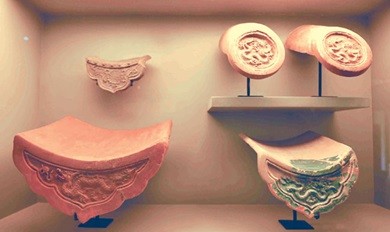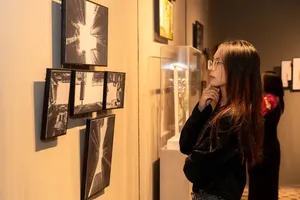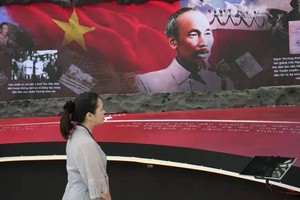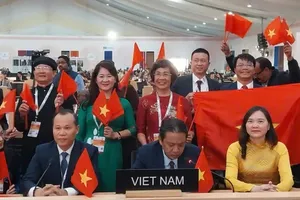The excavation of Thang Long Royal Citadel in Ha Noi this year has so far revealed various large-scale architectural vestiges, according to reports released by archeologists at a recent conference in the city.

The archeologists continued to identify traces of overlapping layers of royal palaces from different dynasties dating back to the 8th century. Most notably, the cultural layer of the Ly dynasty (1009-1225) is about 1.15m thick, while that of the Dai La period (9th-10th centuries) is about 0.5m thick.
The structure and scale of architectural relics from the Ly Dynasty have also been identified by experts from the Viet Nam Institute of Archeology. They confirmed that the large water drainage system constructed during the Ly dynasty and unearthed in 2012 was more complicated than initially thought.
According to history Professor Phan Huy Le, the drainage system not only provided and discharged the water, but also contained spiritual values, which helped to more clearly visualise what the Forbidden City of Thang Long Citadel looked like.
Two huge pillar bases were also exposed within the architectural vestiges of the Ly dynasty, proving the presence of large-scale architecture aside from the drainage system.
The citadel was built in the 11th century during the Ly dynasty to mark the independence of Dai Viet, the former name of Viet Nam. The central sector of the imperial citadel was named a UNESCO World Heritage Site in 2010.
Since then, excavations at the site have been conducted annually by the Viet Nam Institute of Archeology and the Conservation Centre on a total area covering about 1,000sq.m.
This year's excavation was implemented in the area north of Doan Mon Gate, which is assumed to be the former space of Kinh Thien Palace of the Le dynasty.
Additionally, experts discovered new architectural vestiges from the Tran dynasty (1225-1400), which is clearly demonstrated in the lemon flower flooring and brick walls. However, the scale of structure of the vestiges has not been clearly identified yet.
During the excavation, the scientists also found remnants of houses built during the Le So period (1428-1528) and the Le Trung Hung period (1533-1789).
Such findings will significantly contribute to the restoration of the Kinh Thien Palace, which is believed to be the most important building, as it hosted many royal ceremonies in Thang Long Citadel.
"With the results of the research in recent years, 30 per cent of the architecture of Kinh Thien Palace can now be visualised," said Tong Trung Tin, chairman of the Viet Nam Institute of Archeology.
The remaining 70 per cent of information about the palace, especially pertaining to the architecture of its sanctum, is expected to be revealed in upcoming excavations.
According to history Professor Nguyen Quang Ngoc, this year's excavation provided more evidence to further the understanding of historical artefacts that had been previously discovered.
He proposed that Ha Noi's administrator allow the acceleration of the excavation, expand the excavation site and hasten the project of restoring Kinh Thien Palace, which was approved earlier this year.
Le Hong Son, vice chairman of Ha Noi People's Committee, said the city is concerned about the project of restoring space at Kinh Thien Palace.
He added that the Conservation Centre has been assigned to build long-term architectural projects, which aim to clarify the historical and cultural values of Thang Long Royal Citadel.
























